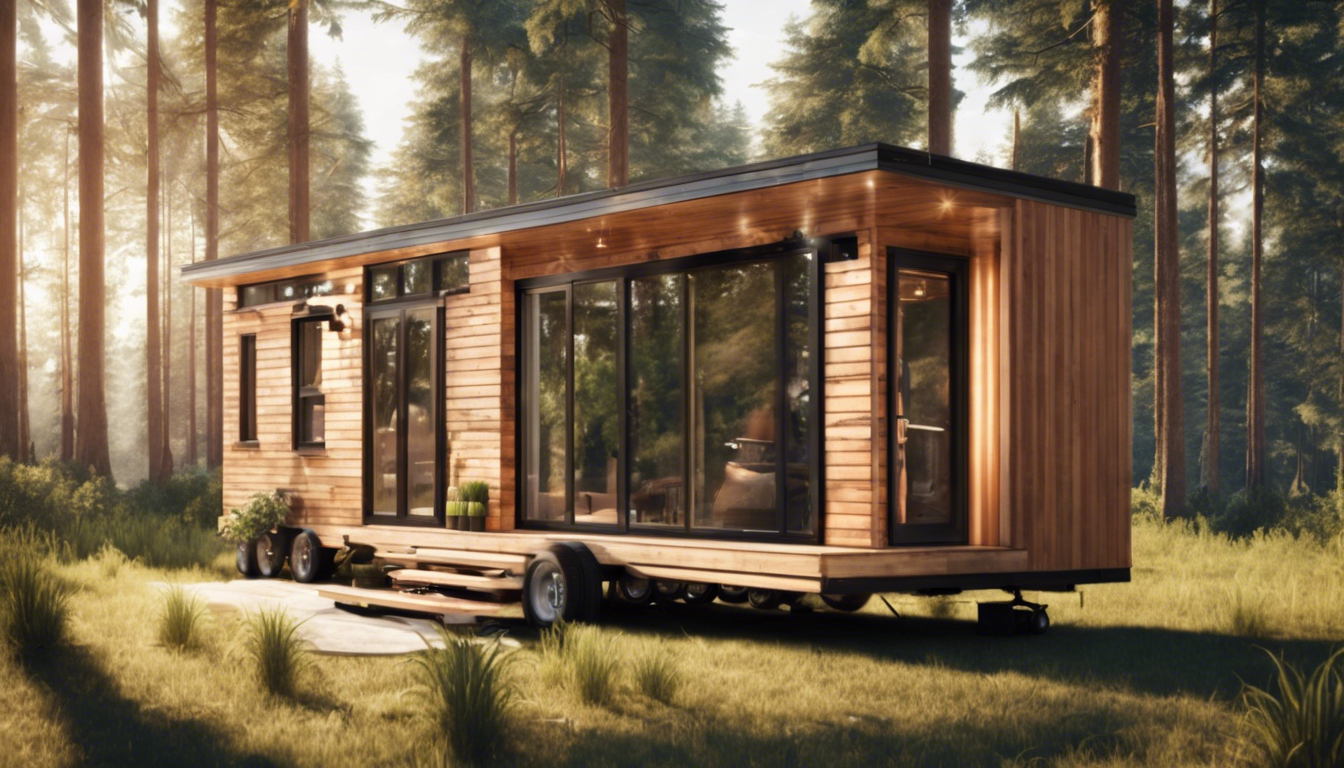Tiny homes on wheels are an innovative housing solution that is gaining popularity among people seeking an alternative lifestyle.
These compact dwellings offer a unique blend of freedom, mobility, and sustainability.
In this article, we will explore the various benefits of tiny homes on wheels, including financial savings, lifestyle flexibility, and positive environmental impact.
Whether you are looking to simplify your life, travel more, or reduce your carbon footprint, tiny homes on wheels provide a practical choice for modern living.
The Most Popular Modular/Tiny Home On Amazon
Lifestyle Flexibility and Mobility
Tiny homes on wheels offer a unique solution for those seeking lifestyle flexibility and mobility.
These compact living spaces allow individuals and families to downsize their living costs while enjoying the freedom to travel.
With a tiny home on wheels, residents can relocate quickly, whether for work, leisure, or adventure.
The design of these homes maximizes space efficiency, incorporating essential features while minimizing clutter.
This style of living promotes a simpler and more intentional lifestyle, encouraging people to assess their needs and prioritize what truly matters.
Furthermore, tiny homes on wheels can foster a sense of community among like-minded individuals who value sustainable living and the enjoyment of nature.
Environmental Impact of Tiny Homes on Wheels
Tiny homes on wheels offer an eco-friendly alternative to traditional housing.
These compact dwellings typically use fewer resources for construction, leading to reduced energy consumption.
The smaller footprint of tiny homes encourages efficient living, as residents often focus on minimalism.
This lifestyle minimizes waste and promotes sustainable practices, such as using recycled materials and solar energy.
Additionally, tiny homes on wheels have mobility advantages, allowing residents to relocate easily without harming the environment.
Overall, tiny homes on wheels contribute positively to environmental conservation by lowering resource demand and fostering sustainable living.
Conclusion: Embracing the Tiny Home Movement
In summary, the tiny home movement highlights the benefits of living in tiny homes on wheels.
These homes provide greater mobility, allowing owners to relocate without the hassle of selling property or moving furniture.
They promote a minimalist lifestyle, encouraging people to reduce their possessions and focus on what truly matters.
Tiny homes on wheels also come with lower environmental impact, as they often use sustainable materials and designs.
By embracing this movement, individuals can enjoy financial freedom, a simplified lifestyle, and greater connection to nature.
Whether you are considering a tiny home as a permanent residence or a vacation spot, it offers an attractive alternative to traditional housing.
Frequently Asked Questions
What are tiny homes on wheels and how do they differ from traditional homes?
Tiny homes on wheels are compact, mobile living structures that are typically under 400 square feet.
Unlike traditional homes, which are fixed in one location, tiny homes on wheels can be moved to different locations, providing flexibility and mobility.
What are the financial benefits of choosing a tiny home on wheels?
The financial benefits include lower mortgage payments, reduced property taxes, lower utility costs, and generally decreased maintenance expenses.
Many individuals find that tiny homes allow them to save money and achieve financial freedom.
How do tiny homes on wheels support a flexible lifestyle?
Tiny homes on wheels enable owners to live a lifestyle that prioritizes simplicity, travel, and adventure.
Owners can downsize their possessions and easily relocate to different areas, allowing for spontaneous living experiences and exploration.
What is the environmental impact of living in a tiny home on wheels?
Tiny homes on wheels typically have a smaller ecological footprint compared to traditional homes.
They use fewer resources for heating, cooling, and maintenance, encouraging a more sustainable lifestyle through reduced waste and energy consumption.
How can I get started in the tiny home movement?
To get started, you can research tiny home designs, assess your budget, and explore zoning regulations in your area.
You can also connect with tiny home communities and attend workshops to learn more about the lifestyle and best practices.




Leave a Reply